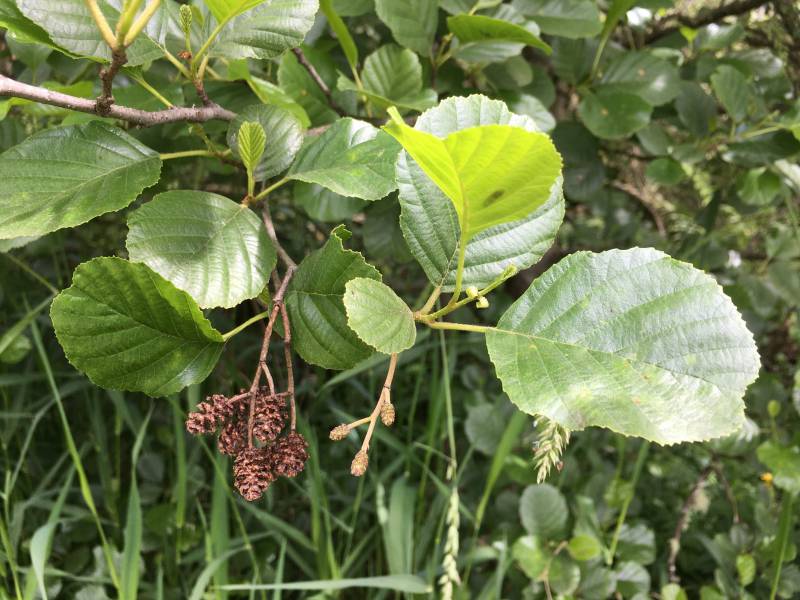Alnus glutinosa
Alnus incana
Black alder, European alder
mountain alder
Blades obovate to nearly orbiculate, 3--9 × 3--8 cm, margins often irregularly doubly serrate to nearly dentate, apex often retuse or obcordate, occasionally rounded; upper and lower surfaces heavily resin-coated.
: Leaves alternate, simple, the blades broadly elliptic to ovate-oblong, 3-7 cm. long, rounded at the base and usually obtuse at the tip, the margins wavy and denticulate, the upper surface green, often glabrous, the lower surface pale, usually pubescent.
Catkins developing before the leaves on growth of the previous season; staminate catkins clustered, pendulous, 3-10 cm. long, the flowers consisting of 4 subsessile anthers; pistillate catkins cone-like, ellipsoid-ovoid, 9-13 mm. long, the peduncles stout, short.
Nutlet thin-margined but without a true wing.
Alnus glutinosa
Alnus incana
- Local floras:
BC,
OR,
WA
- Local Web sites:
Flora NW,
PNW Herbaria
WildflowerSearch
iNaturalist (observations)
USDA Plants Database
- LBJ Wildflower Center
- SEINet
- Plants of the World Online
- Encyclopedia of Life
- Wikipedia
- Google Image Search



